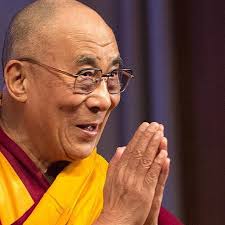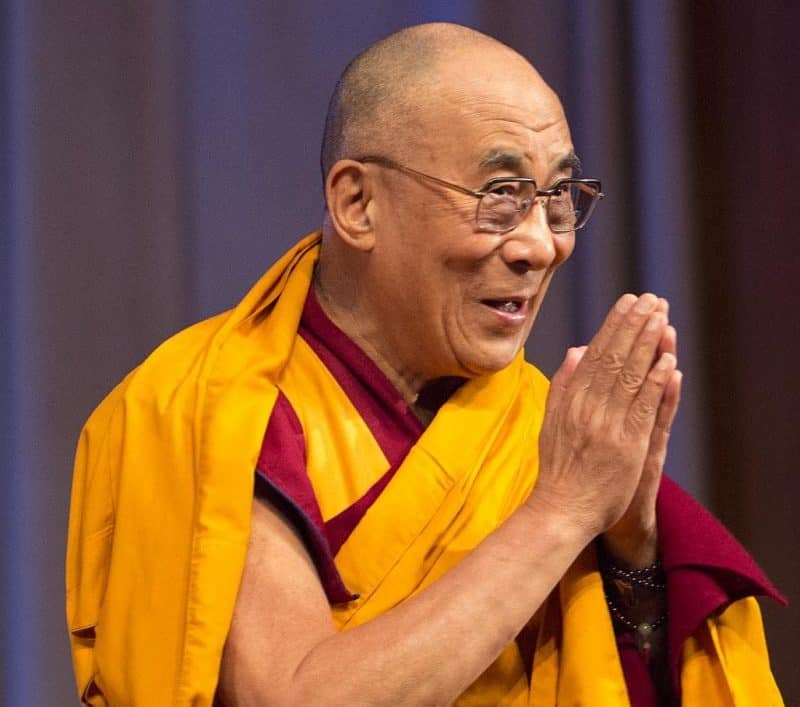 In my previous blog, I discussed how hate is the Dark Side of the Force. Given our political climate these days, it is important that we don’t get caught up in the divisiveness that we see in our society. If we do, then we become part of the problem rather than part of the solution. How do we get around the judgment that is often part of this polarization? One way of doing that is by finding common ground.
In my previous blog, I discussed how hate is the Dark Side of the Force. Given our political climate these days, it is important that we don’t get caught up in the divisiveness that we see in our society. If we do, then we become part of the problem rather than part of the solution. How do we get around the judgment that is often part of this polarization? One way of doing that is by finding common ground.
Approach of the Dalai Lama
I’ve read a number of books by the Dalai Lama. You probably already know that he is a Buddhist monk and considered to be the spiritual leader of Tibet. Regardless of whether one is a Buddhist or not, he is an inspiration to countless people, including myself. One of my favorite books by him is The Art of Happiness. It was written with the Dalai Lama and psychiatrist, Dr. Howard Cutler. It’s on my short list of the most life-changing books that I have read, so I highly recommend it!
In reading a number of his books as well as articles about the Dalai Lama, some of the qualities that stand out about him include his warmth, compassion, and ability to connect with other people. An approach that he uses when meeting new people really connected with me. It is something that I have tried to use in my own life. This might sound cliche, but I believe that if more people used this approach, the world would be a better place. His approach is about finding common ground.
I would say it is more of “an approach” than “a strategy.” It is something to weave into our daily lives that can help us connect with others, increase empathy and compassion, and reduce division. As discussed in my previous blog about hate, our happiness is entwined with that of others. So, it is in our best interest, and the best interest of others, to develop and maintain strong relationships.
Finding Common Ground
The Dalai Lama’s approach is about finding common ground with others. Now, it’s always a good idea when meeting new people to try to determine what we have in common. So, it might be about football, kids, movies, and so on. This provides a bridge that enables us to connect with others. The Dalai Lama takes this to its most basic level though. He starts with the idea that all people want to be happy and they don’t want to suffer. Thus, even a person who differs from you about politics or religion shares the same goals of trying to be happier in life and reduce their suffering.
Also, the Dalai Lama considers how we all share the same emotions. At various times, we all experience feelings of being happy, mad, sad, scared, jealous, stressed, and so on. For instance, we are happy when our kids do well in school or sports and sad when our best friend moves away. Thus, regardless of a person’s background or experiences, we always have some fundamental needs, desires, and emotions that can connect with people who we view as “others.”
Why Do We View People as “Others”?
There is a human tendency to look at how others are different than us. For the most part, this comes from evolution. There is a survival value to fear and avoid what is different than us. For instance, if we didn’t fear and avoid lions during our evolution, we’d be eaten! But now we view “others” as different and separate from us based on race, culture, politics, age, religion, etc. Focusing on how we are different from others is the opposite of finding common ground. Focusing on how we are different from others creates a “separateness” and an “us” versus “them” mentality.
In our politics, especially as of late, this is particularly true. One perspective that most of us share with others whom we view as different from us is: “How on earth can people in their right mind support (or believe) _________!?” Curiously enough, both sides think that! So, in a way, our viewing each other as “ignorant” or “delusion” is something that we share in common with “others.”
The Takeaway
If we pause for a minute and go deeper, when can see that others are more like us than not. We we start to view others as similar to us, it makes it more likely that we can connect with them. We need to see ourselves in them. They, like us, want to be happy, and they don’t want to suffer. They, like us, are trying to do the best they can in this often crazy world. This is what finding common ground is all about.
It is said that a house divided against itself cannot stand. So, we need to find an approach to viewing others in a way that leads to greater unity instead of greater conflict and dissension. Rather than vilifying others who are different than us, we need to find ways to create greater connection. The Dalai Lama’s approach to viewing others as like ourselves enables us to build relationships. Finding common ground with others is a key to reducing the bitterness and conflict that is all too common in our society.

